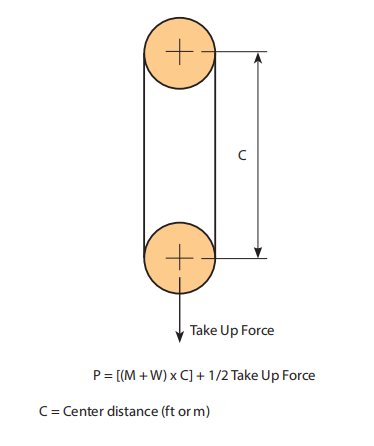Introduction
A cautious assessment of your disorders surrounding a conveyor is necessary for correct conveyor chain selection. This area discusses the basic concerns expected for successful conveyor chain choice. Roller Chains are often applied for light to reasonable duty materials dealing with applications. Environmental problems could require the usage of distinctive components, platings coatings, lubricants or the potential to operate with no added external lubrication.
Simple Information and facts Essential For Chain Selection
? Type of chain conveyor (unit or bulk) which include the system of conveyance (attachments, buckets, by means of rods and so forth).
? Conveyor layout which include sprocket areas, inclines (if any) plus the amount of chain strands (N) for being utilised.
? Amount of material (M in lbs/ft or kN/m) and type of materials to be conveyed.
? Estimated excess weight of conveyor elements (W in lbs/ft or kN/m) such as chain, slats or attachments (if any).
? Linear chain pace (S in ft/min or m/min).
? Environment by which the chain will operate which includes temperature, corrosion circumstance, lubrication ailment and so forth.
Stage one: Estimate Chain Stress
Utilize the formula below to estimate the conveyor Pull (Pest) after which the chain tension (Test). Pest = (M + W) x f x SF and
Test = Pest / N
f = Coefficient of Friction
SF = Pace Element
Phase 2: Make a Tentative Chain Choice
Employing the Test value, make a tentative variety by choosing a chain
whose rated operating load greater than the calculated Check worth.These values are ideal for conveyor support and therefore are diff erent from individuals proven in tables on the front from the catalog that are associated with slow velocity drive chain utilization.
On top of that to suffi cient load carrying capability frequently these chains have to be of a certain pitch to accommodate a sought after attachment spacing. One example is if slats are to be bolted to an attachment every single one.5 inches, the pitch from the chain picked will have to divide into one.5?¡À. Hence one particular could use a 40 chain (1/2?¡À pitch) using the attachments just about every 3rd, a 60 chain (3/4?¡À pitch) with all the attachments just about every 2nd, a 120 chain (1-1/2?¡À pitch) with all the attachments every single pitch or perhaps a C2060H chain (1-1/2?¡À pitch) with all the attachments just about every pitch.
Phase 3: Finalize Selection – Determine Real Conveyor Pull
Right after creating a tentative selection we need to confirm it by calculating
the actual chain tension (T). To complete this we need to fi rst determine the real conveyor pull (P). In the layouts shown over the proper side of this web page decide on the proper formula and calculate the total conveyor pull. Note that some conveyors might be a combination of horizontal, inclined and vertical . . . in that case determine the conveyor Pull at just about every section and include them collectively.
Phase 4: Calculate Optimum Chain Tension
The utmost Chain Stress (T) equals the Conveyor Pull (P) as calculated in Phase 3 divided by the number of strands carrying the load (N), occasions the Speed Factor (SF) shown in Table 2, the Multi-Strand Factor (MSF) shown in Table three plus the Temperature Aspect (TF) shown in Table four.
T = (P / N) x MSF x SF x TF
Step five: Verify the ?¡ãRated Functioning Load?¡À of the Chosen Chain
The ?¡ãRated Working Load?¡À from the selected chain must be greater compared to the Optimum Chain Tension (T) calculated in Stage four over. These values are appropriate for conveyor services and therefore are diff erent from individuals proven in tables at the front of the catalog that are linked to slow speed drive chain usage.
Phase six: Check out the ?¡ãAllowable Roller Load?¡À in the Selected Chain
For chains that roll around the chain rollers or on leading roller attachments it really is necessary to check the Allowable Roller Load?¡À.
Note: the Roller load is determined by:
Roller Load = Wr / Nr
Wr = The complete  weight carried by the rollers
weight carried by the rollers
Nr = The amount of rollers supporting the excess weight.